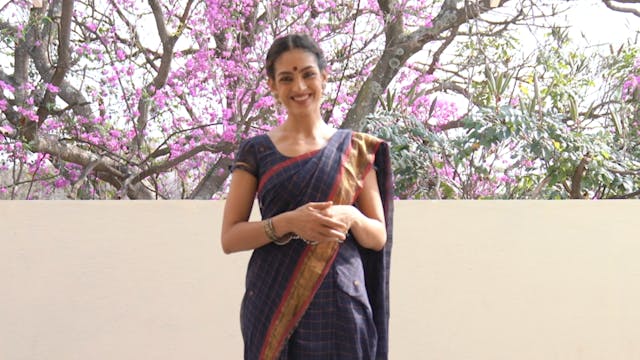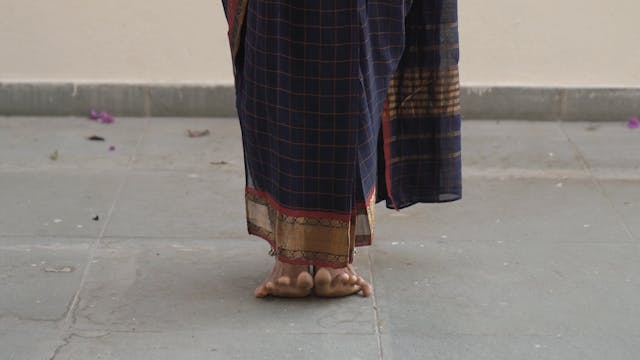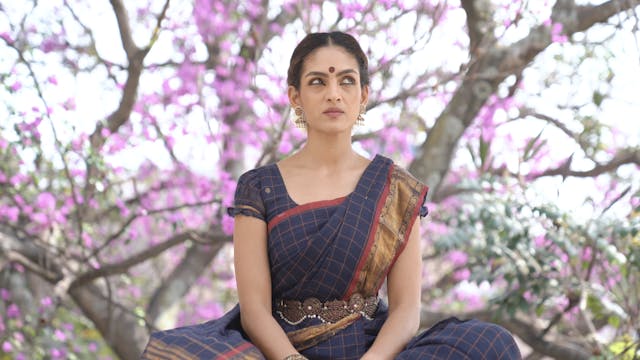The arms considered one of the Upāngas, or minor limbs.
The movements are used primarily to communicate meaning in the context of gesture and also clear articulation in dance or nritta.
Please refer to the Shloka below for pronunciation. Please note that the separate movements of the head when put together in a Shloka form 'Sandhis', or compound words in the Sanskrit language. Words like 'ca', 'thatha', mean "and", "also". The separate words for each movement are also given below the shloka.
Tiryak ūrdvagatam caiva tathādhomukha eva ca
āviddasca apaviddasca mandalaswastikastatha
anicitaha kuncitascaiva prshtagasceti uditaha
bāhuprakāro dasadha nātyanritta prayoktribhihi
Tiryak
ūrdvagatam
adhomukham
āvidda
apavidda
mandala
swastika
anicitah
kuncitah
prshtagah
Up Next in Natyashastra: Angas & Upangas
-
Ćarañāguli bheda Introduction
The toes are considered one of the Upāngas, or minor limbs.
The movements are used primarily to communicate meaning in the context of gesture.
-
Ćarañāguli bheda Shloka
The toes are considered one of the Upāngas, or minor limbs.
The movements are used primarily to communicate meaning in the context of gesture.
Please refer to the Shloka below for pronunciation. Please note that the separate movements of the head when put together in a Shloka form 'Sandhis', or...
-
Driśti bheda Introduction
The eye movements are considered one of the Mukhaja, or gestures of the face according to the Nātyasāstra.
The movements are used primarily to communicate meaning in the context of gesture.


